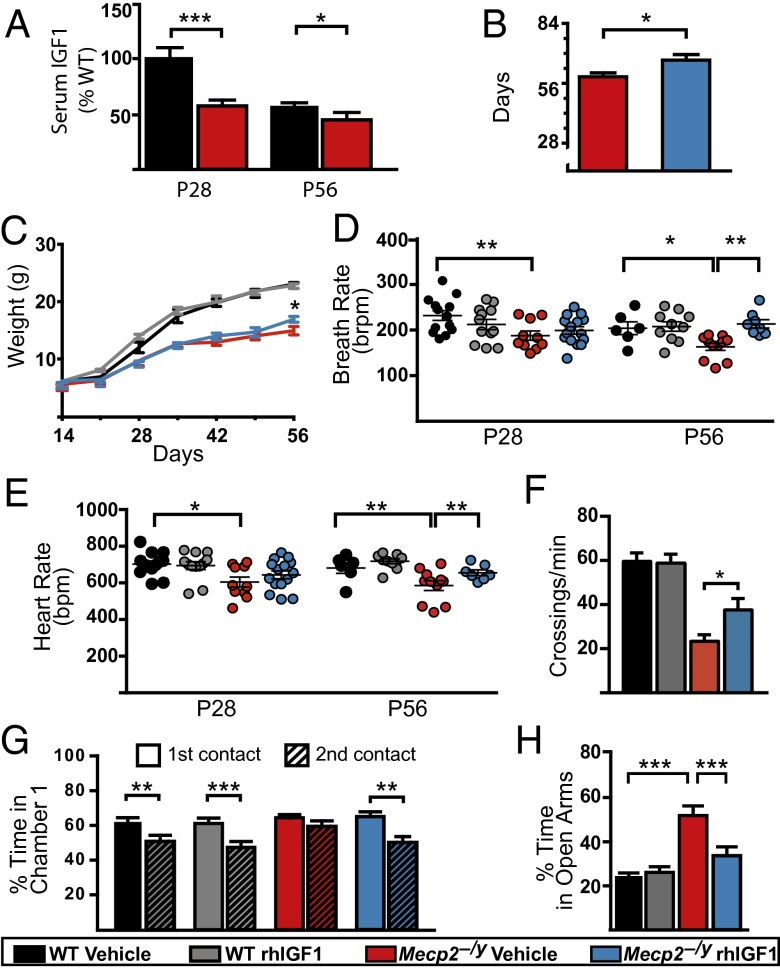Fig. 1.
rhIGF1 promotes survival, improves physiological condition, and restores normal levels of social and anxiety-related behavior of Mecp2−/y mice. (A) Serum levels of endogenous IGF1 measured in P28 and P56 mice relative to WT P28 controls [statistical comparisons used unpaired t test for equal variances; WT (P28 and P56), n = 12 and 10; Mecp2−/y (P28 and P56), n = 10 and 9]. (B) Mean survival age of Mecp2−/y animals treated with vehicle or rhIGF1 (unpaired t test; Mecp2−/y vehicle, n = 27; rhIGF1, n = 29). (C) Weight variation from P14 (starting day of injection) to P56. Comparisons between KO vehicle and treated were done week by week with an unpaired t test for equal variances (WT vehicle, n = 26; rhIGF1, n = 22; Mecp2−/y vehicle, n = 27; rhIGF1, n = 29). (D and E) Scatterplot of average breathing (D) and cardiac (E) rates. Each dot represents a single animal; lines indicate population average (ANOVA with Newman–Keuls post hoc analysis for multiple comparison). (F) Nocturnal locomotor activity expressed as average number of beam crossings per minute (ANOVA with Newman–Keuls post hoc analysis for multiple comparisons performed at each separate time point; WT vehicle, n = 25; rhIGF1, n = 28; Mecp2−/y vehicle, n = 21; rhIGF1, n = 26). (G) Three-chamber test measurements showing the percentage of time the animals spent socializing with a stranger mouse during the first contact (solid bars) and 30 min after the first contact (hatched bars) at P28–35 (paired t test). (H) Percentage of time spent in the open arms of a plus maze as measurement of anxiety-related behavior at P28–35 (ANOVA with Newman–Keuls post hoc analysis for multiple comparisons; WT vehicle, n = 18; rhIGF1, n = 16; Mecp2−/y vehicle, n = 21; rhIGF1, n = 23). Error bars represent SEM. *P < 0.05; **P < 0.01; ***P < 0.001. See also Fig. S1.

